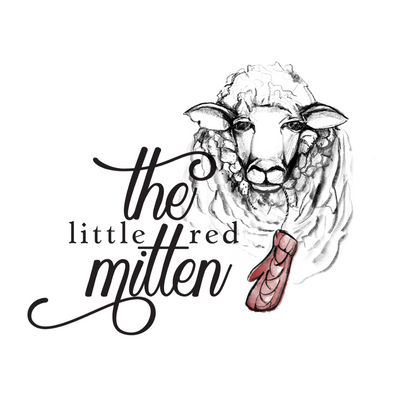DEAR KNIT NERD
Is there a way to tell which of your yarns are worsted spun, and which are woollen spun???
DEAR MARY
To answer your question we must first have an understanding of what is meant by "woolen" and "worsted" spun. Many knitters are familiar with using the term "worsted" to mean the weight/thickness of the yarn but it has another meaning in yarn production as well. There are 2 different processes used to manufacture/spin yarn.
The worsted process involves combing the raw wool so that all of the fibres align neatly from root to tip while simultaneously removing any too short fibers and then spinning those neatly aligned fibers into a smooth, dense yarn. This process is usually used with fibers that have a long staple length and creates yarn that is smooth, evenly spun, lustrous, resistant to pilling and wear and has great stitch definition and drape when knit. Worsted spun yarns can be single or multiply and are ideal for drapey garments like shawls and garments that need to have good wear resistance like socks.
The woolen process involves first carding (think a brush instead of a comb) the fleece to detanlge it and evenly distribute the short fibers. Carding does not neatly align fibers like combing does. Instead the fibres will be facing every which way, forming a cloud like sheet, which when spun allows a lot of air to get trapped inside the yarn. This process is usually used with fibers that have a short staple length as the carding process allows the individual fibers to grab on to each other more easily. Woolen spun yarns usually have multiple plies to add strength. The woolen process produces a yarn that is less strong but very warm due to the air trapped among fibers. The yarn is fuzzier, loftier and bouncier than worsted spun yarns. Woolen spun yarns tend to "bloom" after blocking and are great for stranded colourwork since the fuzzier, collapsible yarn allows the different coloured stitches to nest into one another, hiding colour changes and the carried floats in behind. Woolen spun yarns are good for warm, insulated garments that you want to have more structure like winter sweaters, hats and mitts. Another interesting characteristic of woolen spun yarn is that the same yarn can knit up at a range of different gauges since the yarn can be easily compressed using smaller needles due to the trapped air or left lofty and allowed to bloom into the extra space after blocking when using larger needles.
The main visual difference is that worsted spun yarns are usually smoother, shinier and often more tightly spun. When you look closely, you'll see that all the fibers are aligned and tightly packed together. If you try to break a worsted spun yarn with your hands it takes a considerable amount of strength. Sock yarns and most commercial and indi dyed yarns are worsted spun. The yarns you are most familiar with are most likely worsted spun as they tend to be more common.
Woolen spun yarns appear more "rustic", less smooth and often have a halo from all those fibers sticking out every which way (disclaimer: not ALL yarns with a halo are woolen spun, some softer fibers like angora or cashmere create a halo even when worsted spun). When you look closely, you can see that the fibers do not align, instead they are all facing different directions . If you try to break a woolen spun yarn with your hands, it breaks easily with little resistance. Woolen yarns often have a considerable amount of bounce and elasticity. If you hold a woolen spun yarn between your fingers 6 to 8 inches apart and gently tug and release, you will see the yarn stretch and then return to its original length. Worsted spun yarns behave this way also to an extent due to the crimp in the wool fibers, but woolen spun yarns will stretch considerably more before returning to their original state. Woolen spun yarns are rarely (if ever) superwash as the random fibers that stick out are prone to felting to one another. Briggs and Little and Juniper Moon Patagonia are some well known woolen spun yarns.
I hope this helps you to choose the right yarn for your project the next time you are shopping for yarn!
Sincerely,
Your friendly neighbourhood Knit Nerd


0 comments